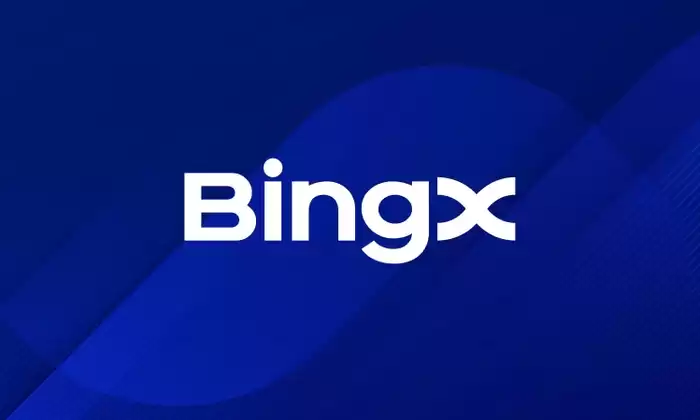-
 bitcoin
bitcoin $122659.385674 USD
0.52% -
 ethereum
ethereum $4484.113342 USD
-0.09% -
 bnb
bnb $1304.229256 USD
-0.85% -
 tether
tether $1.000204 USD
-0.03% -
 xrp
xrp $2.860636 USD
-0.51% -
 solana
solana $227.288799 USD
2.36% -
 usd-coin
usd-coin $0.999805 USD
0.01% -
 dogecoin
dogecoin $0.252837 USD
1.18% -
 tron
tron $0.341149 USD
1.12% -
 cardano
cardano $0.830507 USD
0.33% -
 hyperliquid
hyperliquid $45.792319 USD
0.04% -
 chainlink
chainlink $22.422164 USD
1.55% -
 ethena-usde
ethena-usde $1.000283 USD
0.01% -
 sui
sui $3.511389 USD
0.83% -
 stellar
stellar $0.385276 USD
-0.44%
BingX Contract Trading Tips
With BingX's range of contract types, leverage options, technical analysis tools, and risk management strategies, traders can maximize their profitability by employing a well-informed and disciplined approach to contract trading.
Nov 25, 2024 at 10:21 am

BingX, a leading cryptocurrency exchange, offers a robust platform for contract trading, enabling traders to speculate on the future prices of digital assets. To help traders optimize their trading strategies and enhance their profitability, this comprehensive guide provides a series of practical BingX contract trading tips.
Understanding Contract Trading- What is Contract Trading?
Contract trading involves the buying and selling of futures contracts, which are agreements to buy or sell an underlying asset at a predetermined price on a specific future date. In cryptocurrency contract trading, the underlying asset is typically a cryptocurrency such as Bitcoin or Ethereum.
- Types of Contracts
- Perpetual Contracts: Perpetual contracts have no set expiry date and can be held indefinitely. They offer high leverage and flexibility.
- Quarterly Contracts: Quarterly contracts expire every three months. They provide lower leverage than perpetual contracts but may be less volatile.
- Leverage
Leverage refers to the amount of borrowed capital used to amplify profits or losses. BingX offers leverage options ranging from 1x to 100x, allowing traders to amplify their positions. Higher leverage carries greater risk, so traders should exercise caution.
Trading Strategies- Trend Following
Trend following involves identifying the overall market trend and trading in the direction of that trend. Traders use technical analysis tools such as moving averages and support/resistance levels to identify trends.
- Scalping
Scalping involves making multiple small trades over short periods, capturing small price fluctuations. Scalpers rely on precise timing and discipline to profit from even minor price movements.
- Arbitrage
Arbitrage involves exploiting price differences between different exchanges or markets. Arbitrageurs buy an asset on one exchange and simultaneously sell it on another exchange where it is priced higher.
Risk Management- Stop Loss and Take Profit Orders
Stop loss and take profit orders help traders limit their losses and lock in profits. Stop loss orders automatically sell a position when it reaches a predetermined loss threshold, while take profit orders automatically sell a position when it reaches a predetermined profit level.
- Position Sizing
Position sizing involves determining the optimal trade size based on the trader's account balance, risk tolerance, and trading strategy. Proper position sizing helps prevent catastrophic losses and allows traders to optimize their returns.
Technical Analysis- Chart Patterns
Chart patterns are visual representations of price movements that can indicate potential trading opportunities. Common chart patterns include double tops, double bottoms, triangles, and flags.
- Technical Indicators
Technical indicators are mathematical calculations used to analyze price data and identify trends, momentum, and volatility. Popular technical indicators include moving averages, relative strength index (RSI), and stochastic oscillator.
Psychology- Discipline
Discipline is essential in contract trading. Traders must adhere to their trading plan, avoid emotional decision-making, and maintain a calm and rational approach.
- Emotional Control
Trading can evoke strong emotions, such as fear and greed. Traders must be able to control their emotions and make decisions based on logical analysis rather than impulses.
- Risk Management
Risk management is crucial for long-term success in contract trading. Traders should establish clear risk parameters, set realistic profit targets, and accept the possibility of losses.
Disclaimer:info@kdj.com
The information provided is not trading advice. kdj.com does not assume any responsibility for any investments made based on the information provided in this article. Cryptocurrencies are highly volatile and it is highly recommended that you invest with caution after thorough research!
If you believe that the content used on this website infringes your copyright, please contact us immediately (info@kdj.com) and we will delete it promptly.
- Binance Alpha's AB Token Crash: A Cautionary Tale in Cryptocurrency
- 2025-10-09 20:45:17
- Crypto ETFs, Altcoins, and Wall Street: Navigating the New Frontier
- 2025-10-09 20:45:17
- Bitcoin's Decade of Dominance: A Super Reason to Hold for the Next 10 Years?
- 2025-10-09 20:25:15
- FUN Token, SportFun Network, and Football Fun: A Winning Play in the Crypto Game?
- 2025-10-09 20:50:11
- Joke's On You, Copyright Thieves: Datavault AI's Joke Token Revolutionizes Comedy
- 2025-10-09 20:50:11
- Joke Token, Copyright Protection, and Datavault AI: A New Era for Comedy?
- 2025-10-09 20:55:11
Related knowledge

Practical parameter settings for a Bitcoin multi-timeframe moving average system
Sep 18,2025 at 10:54pm
Optimizing Timeframe Combinations for Bitcoin Trading1. Selecting appropriate timeframes is crucial when building a multi-timeframe moving average sys...

How can I filter out false breakouts in Dogecoin high-frequency trading?
Sep 22,2025 at 01:00am
Understanding False Breakouts in Dogecoin Trading1. A false breakout occurs when Dogecoin's price appears to move beyond a defined support or resistan...

Techniques for identifying tops and bottoms in the Bitcoin on-chain NVT model
Sep 20,2025 at 07:54pm
Understanding the NVT Model in Bitcoin Analysis1. The Network Value to Transactions (NVT) ratio is often described as the 'P/E ratio' of the cryptocur...

What does the surge in open interest in Bitcoincoin futures mean?
Sep 20,2025 at 11:18pm
Understanding the Surge in Dogecoin Futures Open Interest1. A surge in open interest within Dogecoin futures indicates a growing number of active cont...

How can I use the Ethereum USDT premium to gauge market sentiment?
Sep 18,2025 at 11:55pm
Understanding the Ethereum USDT Premium1. The Ethereum USDT premium refers to the price difference between USDT (Tether) traded on Ethereum-based plat...

What should I do if Ethereum staking yields decline?
Sep 20,2025 at 06:18am
Understanding the Causes Behind Declining Ethereum Staking Yields1. The Ethereum network transitioned to a proof-of-stake consensus mechanism with the...

Practical parameter settings for a Bitcoin multi-timeframe moving average system
Sep 18,2025 at 10:54pm
Optimizing Timeframe Combinations for Bitcoin Trading1. Selecting appropriate timeframes is crucial when building a multi-timeframe moving average sys...

How can I filter out false breakouts in Dogecoin high-frequency trading?
Sep 22,2025 at 01:00am
Understanding False Breakouts in Dogecoin Trading1. A false breakout occurs when Dogecoin's price appears to move beyond a defined support or resistan...

Techniques for identifying tops and bottoms in the Bitcoin on-chain NVT model
Sep 20,2025 at 07:54pm
Understanding the NVT Model in Bitcoin Analysis1. The Network Value to Transactions (NVT) ratio is often described as the 'P/E ratio' of the cryptocur...

What does the surge in open interest in Bitcoincoin futures mean?
Sep 20,2025 at 11:18pm
Understanding the Surge in Dogecoin Futures Open Interest1. A surge in open interest within Dogecoin futures indicates a growing number of active cont...

How can I use the Ethereum USDT premium to gauge market sentiment?
Sep 18,2025 at 11:55pm
Understanding the Ethereum USDT Premium1. The Ethereum USDT premium refers to the price difference between USDT (Tether) traded on Ethereum-based plat...

What should I do if Ethereum staking yields decline?
Sep 20,2025 at 06:18am
Understanding the Causes Behind Declining Ethereum Staking Yields1. The Ethereum network transitioned to a proof-of-stake consensus mechanism with the...
See all articles


























![🚨IS VECHAIN (VET) A DEAD COIN ?? PRICE ANALYSIS [GET READY NOW] 🚨IS VECHAIN (VET) A DEAD COIN ?? PRICE ANALYSIS [GET READY NOW]](/uploads/2025/10/09/cryptocurrencies-news/videos/vechain-vet-dead-coin-price-analysis-ready/68e7b200b067b_image_500_375.webp)















































